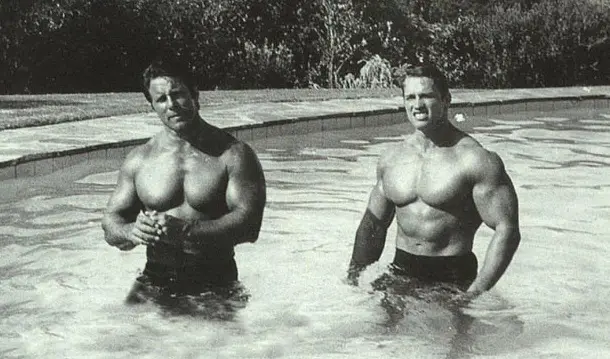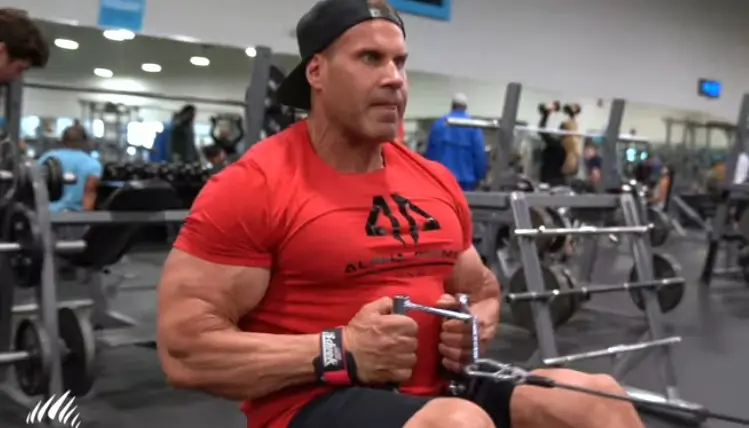Training hard takes a lot out of your body. It depletes your energy, causes microscopic trauma to your muscles, and fatigues your nervous system too. If you keep exercising hard without allowing time to recover, your progress will soon grind to a halt.
However, with proper rest and recovery, your body will adapt, grow, and bounce back stronger and fitter than before. The sooner you recover, the sooner you can get back in the gym.
Luckily, there are several things you can do that will enhance recovery and allow you to get back in the gym sooner.

Remember; better recovery means more workouts and faster progress. Do not underestimate the importance of recovery!
1. Cool-Down Properly
Just because your workout is finished does not mean you can collapse in a heap or head straight to the showers. Instead, you should keep your body moving and spend a few minutes cooling down.

A cool-down includes a few minutes of light cardio followed by stretching for the muscles you have just worked.
Level Up Your Fitness: Join our 💪 strong community in Fitness Volt Newsletter. Get daily inspiration, expert-backed workouts, nutrition tips, the latest in strength sports, and the support you need to reach your goals. Subscribe for free!
This enhances recovery by pumping freshly oxygenated blood into your muscles and reducing adaptive shortening and muscle tension.
You may also experience less post-exercise muscle soreness too. While the studies (1) on the benefits of cooling down after exercise are mixed, many exercisers feel that they recover better if they finish their workouts with a cool-down. As cooling down only takes about ten minutes, it makes sense to do it even if the benefits are relatively small.
2. Post-Workout Nutrition
Studies suggest (2) that what you eat after exercise can have a considerable impact on how quickly you recover. Exercise increases insulin sensitivity which primes your muscles for rapid nutrient uptake.
Eating after your workout will kick start the recovery process by providing your body with precisely what it needs for growth and repair. Carbs are digested into glucose which is stored as glycogen. Intense exercise depletes your glycogen stores.
The sooner you repay this debt, the sooner your muscles will be recharged and ready for your next training session.
Protein supplies your body with amino acids, the building blocks of muscle. As training breaks your muscles down, amino acids are used to repair this damage in the same way a builder uses bricks to repair a damaged wall.
Because of this, most exercisers need to consume both carbs and protein after training. How much depends on how long and how intensely you worked out, but 25 grams of protein and 50 grams of carbs is a good place to start.
3. Get a Massage
Massage is probably the oldest form of medicine. It’s also very intuitive. After all, if you hurt yourself, your first reaction is to rub the affected area. That’s massage! Studies reveal that massage is very good for enhancing recovery (3).

Massage increases circulation and manually stretches your muscles to help clear out the waste products caused by hard training while infusing your muscles with recovery-boosting oxygen. This also helps prevent post-exercise muscle soreness and reduces stress and tension.
Unless you are a professional athlete, you probably won’t be able to get a massage after each and every workout, but you can probably do the next best thing – foam rolling.
Foam rolling or, more properly, self-myofascial release, has a similar effect to massage, but you can do it yourself. And as a foam roller costs about half the price of a single massage, it’s as cost-effective as it is beneficial.
4. Use Creatine
Creatine is probably the most commonly used and well-researched supplement on the planet. It’s been in use for over 30 years which means creatine really does work. If it didn’t work, creatine would have disappeared about 29 years ago!
Check our top picks for the Creatine supplements
Creatine has long been associated with muscle and strength gains, but researchers have also concluded that creatine enhances recovery (4) too. The studies show that creatine not only speeds up recovery, it also increases performance in the next workout.
Creatine is certified as safe by the FDA and it’s also easy to use. Just add 5 grams (one teaspoon) to your post-workout drink to give your recovery a boost. There are lots of different creatine supplements around, and many of them are quite exotic and expensive.
However, the best option is also the cheapest; creatine monohydrate. This is the type of creatine used in the quoted study.
5. Do a Recovery Workout
If you train hard, you must include rest days in your weekly workout schedule, but this doesn’t mean sitting around doing nothing.
Inactivity could delay recovery and leave you feeling sore and stiff. Instead, many exercisers find that doing a low-intensity recovery workout actually speeds up recovery.
A recovery workout can be something as simple as going for a walk or a swim or getting back in the gym and doing something more structured.

If you choose the latter option, consider the following recovery workout rules:
- Don’t do anything too taxing – that means lightweights, just a couple of sets, and you should finish your workout feeling like you have lots of gas left in the tank. The main aim of a recovery workout is to increase blood flow to your muscles and mobilize your joints, and not fatigue your muscles.
- Use full-range, compound exercises– use your workout to stretch your muscles and restore any lost range of motion. That means things like squats, lunges, push-ups, and lat-pulldowns are in, and short-range movements like hip thrusts and preacher curls are out.
- Keep your workout short– this is not the time to spend an hour or more in the gym. Even if you keep the intensity low, a long workout could end up delaying recovery instead of enhancing it. Limit your session to about 30-40 minutes. For recovery workouts, shorter is better.
- Use a circuit format– avoid overstressing any one muscle group while boosting blood flow and circulation by following a circuit format. This means doing one set of each exercise in order instead of doing several sets of each exercise before moving on.
Not sure where to start? Here’s an example recovery workout.
| Exercise | Reps | |
| 1 | Goblet squats | 20 |
| 2 | Push-ups | 15 |
| 3 | Lat pulldowns | 15 |
| 4 | Lunges | 12 per leg |
| 5 | Shoulder press | 15 |
| 6 | Cable rows | 15 |
| 7 | Triceps pushdowns | 15 |
| 8 | Barbell curls | 15 |
| 9 | 45-degree back extensions | 12 |
| 10 | Hanging knee raises | 12 |
| Sets: 2-3 | ||
| Recovery: 30 seconds between exercises, two minutes between laps |
||
What you do immediately after your workout is important, and will kick start the recovery process, but an easy rest day workout will help maintain your recovery momentum.
Use these five methods to make sure you recover as fast and completely as possible so that you can make the best progress possible!
References:
- Van Hooren B, Peake JM. Do We Need a Cool-Down After Exercise? A Narrative Review of the Psychophysiological Effects and the Effects on Performance, Injuries and the Long-Term Adaptive Response. Sports Med. 2018;48(7):1575–1595. doi:10.1007/s40279-018-0916-2
- Aragon AA, Schoenfeld BJ. Nutrient timing revisited: is there a post-exercise anabolic window? J Int Soc Sports Nutr. 2013;10(1):5. Published 2013 Jan 29. doi:10.1186/1550-2783-10-5
- Guo J, Li L, Gong Y, et al. Massage Alleviates Delayed Onset Muscle Soreness after Strenuous Exercise: A Systematic Review and Meta-Analysis. Front Physiol. 2017; 8:747. Published 2017 Sep 27. doi:10.3389/fphys.2017.00747
- Cooke MB, Rybalka E, Williams AD, Cribb PJ, Hayes A. Creatine supplementation enhances muscle force recovery after eccentrically-induced muscle damage in healthy individuals. J Int Soc Sports Nutr. 2009; 6:13. Published 2009 Jun 2. doi:10.1186/1550-2783-6-13










